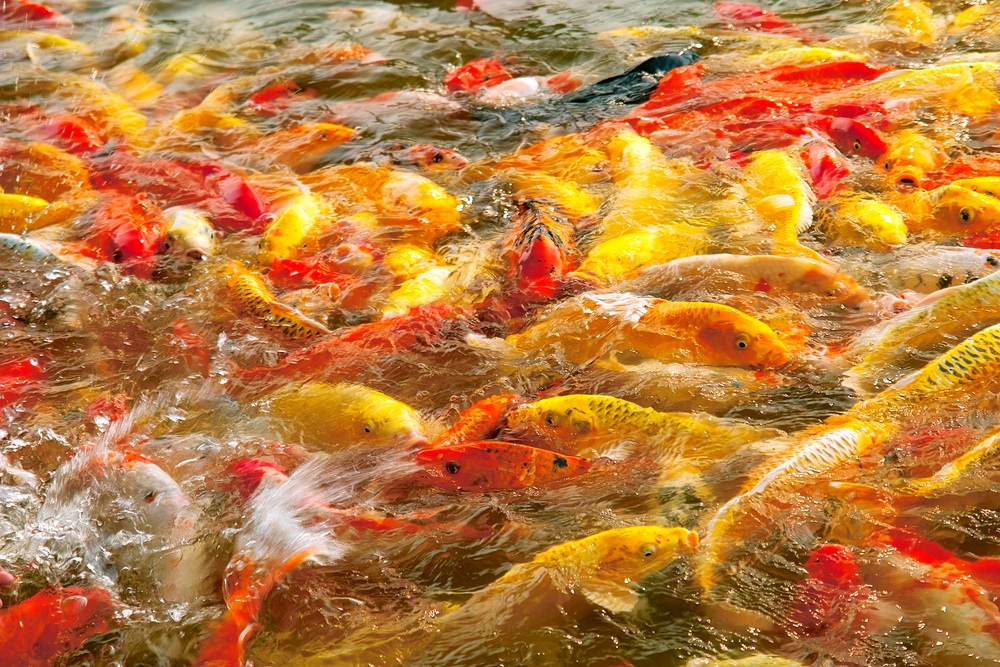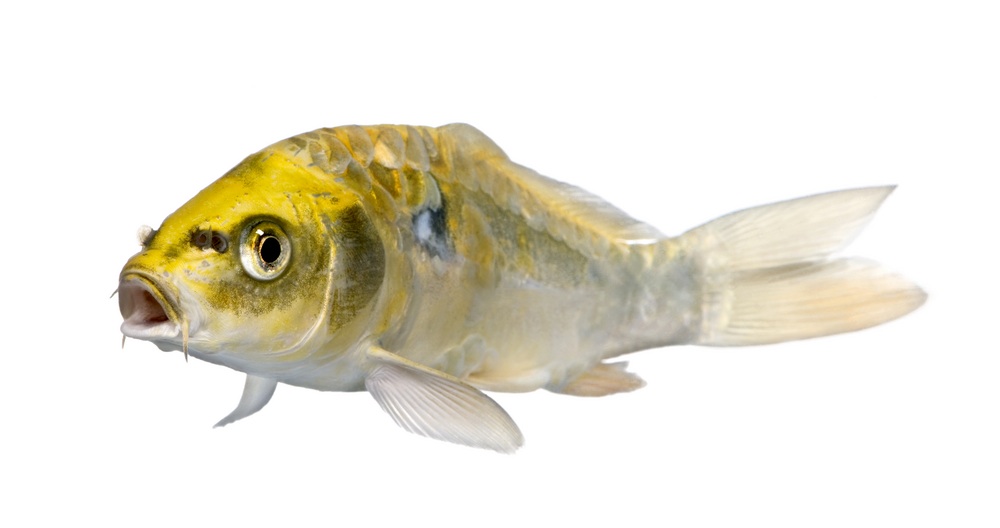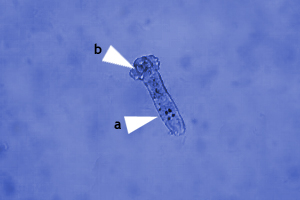Watch for parasites with koi

While it is often easy to see whether fish appear healthy in general terms, it can be much harder to detect parasites on them, especially if these are located not on the body itself, but concealed within the gills. You therefore need to be constantly alert to the threat of parasites, particularly when buying fish to add alongside established stock. Parasitic problems are most likely to become evident at this stage, with the parasites themselves multiplying rapidly when fish are under stress and/or weakened.
New fish should always be kept separate for a period therefore, rather than being introduced directly to an established pond. Always aim to inspect koi both when you purchase them, and also when you get home, before releasing them into their quarters. It is generally easier to spot external parasites on larger individuals, although the coloration of the fish can sometimes serve to disguise them. Being reared in groups on farms, before being caught and sold means that parasites can establish themselves quite easily and spread through a group.
Koi may also succumb to microscopic protozoal parasites as well, including Ichthyophthirius multifiliis, which is the cause of white spot. Any sliminess evident on the body is a characteristic sign of protozoal disease in these fish, resulting from excessive production of the mucus which provides a protective coating over its surface.
Lice
One of the most common parasites which you are likely to find on recently-imported koi are fish lice (Argulus).

©Michal Grabowski
In spite of their name, these are actually crustaceans. Fish lice measure up to 1.2cm (0.5in) in diameter, and anchor themselves to the fish's body by means of suckers. They feed on the blood, piercing the fish's body with their sharp proboscis.
A heavy burden of these parasites will result in anaemia, and they can spread easily. The lice themselves can actually swim from fish to fish, and so they are most likely to thrive where koi are being kept at relatively high stocking densities.
It is obviously possible to treat an infected individual on its own, but if you detect these parasites, then more than one fish in the group is likely to be infected. Having dislodged a louse, so it will be important to treat the site of the bite. Otherwise, the wound will become infected by fungus or bacteria.
A red swelling usually forms at this site, because the parasite releases a toxin as it feeds, which causes local irritation. Affected fish may appear to be more active than usual, rubbing against any items in their enclosure, in a bid to lessen this discomfort. A water-based treatment will be needed to overcome these particular parasites.
Anchor worm
This is another parasite with a confusing name, because the anchor worm is classified as a crustacean. It has a unique life-cycle, with only the mature females being found on the sides of koi. Their shape changes, becoming worm-like as they bore into the flanks, producing an extensive tentacle-like growth to anchor themselves in position. They then release digestive juices, consuming the fish's body tissue, as can be seen in the fish below, as the grey area here on the side of the body. The presence of two egg sacs at the end of the body enables them to be identified easily.

Each female anchor worm (Lernaea species) can produce thousands of eggs. These then hatch, with the young, called nauplii, being free-swimming at this stage. After two further moults, the crustacean assumes a longer body shape and will then attach itself to a fish, localising in the gills. Here mating takes place, with the male anchor worms then reverting to a free-living existence.
Measuring just under 2.5cm (1in) long, the adult females may be hard to spot, but the damage which they can cause will soon become apparent, resulting in ulcers developing on the sides of the fish. These will need rapid treatment if the fish is to survive. If anchor worms themselves are discovered, they must be removed very carefully, so as to minimise the extent of the injury. Proprietary treatments added to the holding areas will destroy the free-living stages in the life-cycle.
Flukes
Even more common, but harder to spot, are flukes. The skin fluke (Gryodactylus) can be distinguished from the gill fluke (Dactylogyrus) by the lack of any eyes. This difference will be obvious under a magnifying lens, with the four dark eye spots (indicated as 'a' in the photo below) and the two pairs of anchors ('b'), which the parasite uses to attach itself indicating a gill fluke. In spite of their names however, these flukes may afflict either part of the body.

Healthy koi can expel gill flukes by a gesture which looks like yawning, but in the case of weakened individuals, the gill tissue which the fish depend on for respiratory purposes can be damaged by large numbers of these parasites.
Flukes tend to be most prevalent during the spring in temperate areas. They can multiply rapidly at this stage, while the koi's resistance will still be relatively low after the colder winter period. There is, however, a key difference between these flukes in terms of their reproductive habits. Gryodactylus gives birth to live offspring, whereas Dactylogryus produces eggs. These hatch into free-swimming larvae, and so can be transferred more easily from fish to fish.
Various treatments for these parasites are available.
Leeches
The fish leech (Piscicola geometra) which attacks koi has strong mouthparts, enabling it to anchor on to the side of the fish. These parasites are quite obvious, measuring about 5cm (2in) in length, and look rather like a piece of thread dangling down. Fish leeches congregate around the softer parts of the fish's body, where it will be easier for them to reach soft tissue. They suck blood, and can also infect the koi with harmful protozoa and other diseases.
Although the leeches can be treated quite easily, their eggs represent a much tougher proposition, being thick-shelled. The most effective way of destroying them is to remove the fish, and treat their quarters with calcium hydroxide, which will wipe out any of these parasites that are hatching, as well as killing the eggs themselves. Look very carefully for leeches if you are obtaining koi from large natural ponds in your area. These parasites are most likely to be introduced to your pond by this route, being associated with wild plants and other fish.